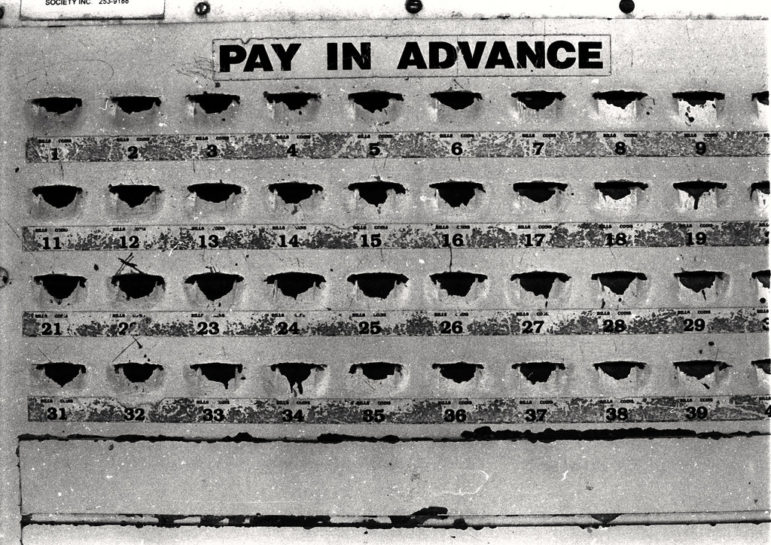
Recently, UK civil society leaders Sir Stephen Bubb and Sir Stuart Etherington offered the radical suggestion that board members of £100 million-plus “charities” be remunerated and that a new category might be established for such large charities.
Bubb just resigned from the Association of Chief Executives of Voluntary Organisations (ACEVO) to launch a new project named the Charities Future Programme to improve governance and leadership in the UK’s charity sector. This new initiative is just getting underway.
Bubb’s challenge has to do with “unitary” vs. “two-tier” board structures. Civil society organizations in the UK and the U.S. follow the conventional two-tier model by which the executive “board” (the CEO and managers) conducts the daily operations of the charity while the volunteer board presides over policy and big-picture governance and planning. The “unitary,” or single board of directors, would be composed of executive and non-executive directors (NEDs), with the independent NEDs getting paid, as they are in the corporate world, while still acting in the best interests of the charity’s wider constituency.
The Guardian reports that this proposal “comes after a troubled period for the voluntary sector in which many of its high-profile problems—fundraising scandals, the collapse of Kids Company and criticism of commercial activities—have been blamed to a large extent on poor governance of bigger charities.” Still, it remains unclear how paid board members would improve governance. In fact, some believe that even in for-profit corporations, the payment of board members may pose problems of various types of self-dealing.
The patterned forms this takes extend beyond the nonprofit sector. In an excellent article in the Boston Globe last December, Sacha Pfeiffer and Todd Wallack report that payments to board members of the 200 largest publicly traded companies in the U.S. have doubled since 2000, and that there seems to be some evidence that those escalating pay packages may constitute a disincentive for active challenging of the CEO.
Corporate watchdogs are worried about more than basic fairness. Some say the director pay at some companies has become so lucrative that it could discourage directors from questioning excessive perks for chief executives for fear of upsetting the rest of the board and losing their coveted positions.
The article goes on to note that:
A 2006 study in the Journal of Corporate Finance found a strong correlation between excessive pay for directors and chief executives and noted that the companies paying their directors the most also underperformed their peers financially. A study last year in the International Journal of Business and Finance Research concluded that high chief executive and board pay go hand-in-hand due to “mutual back-scratching.”
Enron, they wrote, had one of the highest paid boards in the country before it collapsed in 2001. This, then, is perhaps not a practice we want to import from the business sector—especially with no clear and convincing evidence that paid boards perform better than unpaid boards.
In the United States, of course, most nonprofits do not pay board members. Doing so is often seen as unnecessary and even dangerous, a deviation from a norm that ideally sees the directors not personally benefit from any decision they make on behalf of the organization.
Sign up for our free newsletters
Subscribe to NPQ's newsletters to have our top stories delivered directly to your inbox.
By signing up, you agree to our privacy policy and terms of use, and to receive messages from NPQ and our partners.
So, for instance, when, in 2011, then-Massachusetts Attorney General Martha Coakley investigated the extreme severance packages given to two former CEOs of Blue Cross of Massachusetts—$16.4 million for William C. Van Faasen in 2006 and $11 million, including a $4.2 million severance payment, for Cleve Killingsworth in 2010—she found that the board members were paid as much as $90,000 annually and provided with subsidized healthcare besides, even as consumer rates were rising. Not only she, but others were outraged. All of the trustees were well connected in the state power structure. What was going on?
It soon emerged that Blue Cross was not alone. All four of the state’s largest nonprofit insurers were paying board members. Brian McGrory of the Boston Globe broke down why trustee payments are a problem in what was a decidedly high-stakes and very political situation.
In paying the outrageous director fees, these providers are putting tens of thousands of dollars into the bank accounts of key decision makers all over Boston—money being a time-proven lubricant to an awful lot of good will. All this is set against the backdrop of our governor launching a discussion about containing health care costs in a state where health care is a dominant industry.
In other words, the practice can lead to a reverse incentive, a muting of consumer needs, when the system needs its nonprofits to keep that front and center. Since then, all four of the state’s largest nonprofit insurers, at the urging of Coakley, stopped paying their board members with no outward signs of indolent governance.
In general, it appears that the practice of paying trustees is largely, but not exclusively, practiced by larger nonprofits, among which are foundations and healthcare-related organizations. A survey done in 2011 by the Governance Institute indicated that approximately 15 percent of healthcare systems pay trustees—up from 10 percent two years before—but most do so relatively conservatively, with few going above $5000 a year. But almost everyone agrees that the practice can cause some losses of credibility and trust.
For instance, Tampa General Hospital, which primarily serves a low-income population, has a 15-member board made up of local notables. In March, they voted to pay members in a range from $15,000 to $30,000. The change was made after a compensation consultant, there to do a periodic review of salary levels, suggested there was a “small but growing trend” in that direction. At the time, Chris Thompson, the director of research and evaluation at BoardSource, said that according to its research, the proportion of all trustees who are compensated in the form of honoraria or fees was indeed small, but it has not generally been seen to grow over the years. Moreover, although some see this as a solution to board recruitment, in the process they may be tearing out the heart of board service, which depends upon the willingness of community members to clearly place the community’s best interests above their own by engaging in free service.
The vote in Tampa prompted one board member to resign. David A. Straz, Jr., a prominent local philanthropist who had served on the board for almost 20 years, was one of two board members present to have logged a “no” vote, and he was quite clear about his reasons.
“I think it’s a horrible idea,” Straz said. “Tampa General is a very important community asset. Those of us in the community need to donate our services to make those kinds of things better for all of our people in the community.”
In general, it does not seem legitimate for a board to vote on its own compensation. Legally, nonprofit board members can be paid “reasonable” compensation, but this should be considered in accordance with a conflict-of-interest policy and a compensation policy. These policies are put in place to ensure that the board members receiving the salary aren’t engaging in prohibited private inurement.
The question is, is there any compelling reason why nonprofit board members should be paid? It seems like yet another of those practices that have a bright-eyed “logical” rationale that is simply dead wrong on both an ethical and practical basis.











